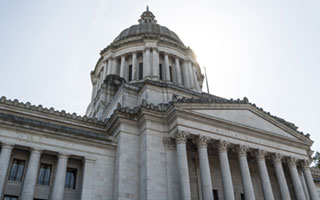I recently heard Steve Lerch, Executive Director and Chief Economist for the Washington State Economic and Revenue Council speak at a weekly Lobby Lunch hosted by AWB. He offered an update on the nation’s economy and what we can expect for the remainder of 2020.
The previous forecast was rolled out in November and according to Lerch does not reflect much change. Revenue collections are $169 million above expectations since last November and December real state excise tax collections were $74 million ahead of the forecast. This is likely due to a rush of sales ahead of January 1, due to the expected increase in tax rates on sales of more than $1.56 million.
Lerch explained that consumer confidence continues to remain strong and small business confidence remains historically high– stronger than 2006, prior to the economic recession. Even as he reviewed confidence charts, he alluded to the possibility that outlooks could be even stronger than we think.
U.S. and Washington labor markets did show some slowing in 2019 but still remain strong and healthy with no signs of recession expected in the forecast. Unemployment rates are the lowest in decades and many of the jobs include people who for years had been sitting on the sidelines.
Hourly earnings are continuing to increase but growth has slowed over the past year. The retail trade industry wages are much higher in Washington State due to headquartered retailers who are driving online sales and have successfully navigated both digital and physical channels.
Although much of the forecast was quite positive, international trade policy still remains uncertain. The U.S. and China have now signed a phase 1 agreement that has kept tariffs from going into effect, however future trade with China is still uncertain. In 2019, Washington exports to most countries declined and were hit pretty hard due to uncertainties with trade-wars.
The U.S. economy has been growing for a really long time, but long-term growth in itself does not automatically lead to recession. The expansion has been moderate but has continued since 2009 and currently does not show signs of slowing. A recent Wall Street Journal economist survey shows a decline in near-term recession probability.
So, what does all this mean for retailers?
Although the industry didn’t appear to add much to the economy in January, retail sales and consumer spending more broadly are expected to rise fast enough in 2020 to keep the economy expanding at a steady pace. Higher incomes and the lowest jobless rate in 50 years have given Washingtonians a lot of confidence. With heightened confidence, retailers who navigate changing consumer demands are likely to benefit in 2020.





